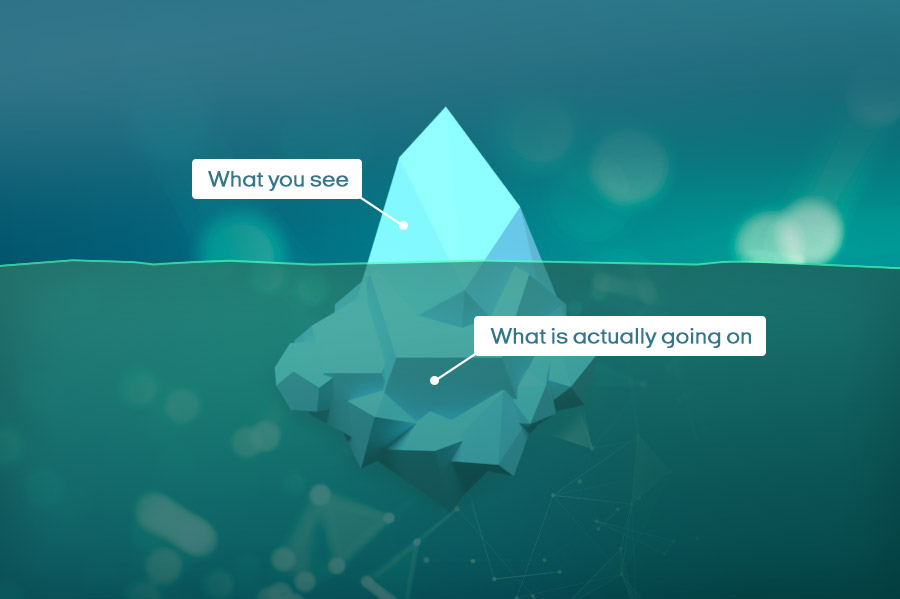What is technical debt and how the typical enterprise organisation can save 20-30% on their current IT
What is technical debt and how you can save 20-30% on your current IT
Managing a large-scale IT department means investing heavily in infrastructure you can rely on. For some departments investing in IT still equals talking hardware to stack away in a cellar, but that is often a costly and resource consuming affair – in both the short and the long run.
Making investments in one of the most innovative and versatile branches out there means that what you invest in today will be outdated by tomorrow. Many IT departments know that this causes an issue, but most can only see the tip of the iceberg.
PROBLEMS AT THE CORE
Technical Debt is the accumulated costs and long-term effects of using inefficient and/or outdated technology, making quality/time trade-offs, delaying routine maintenance, and using other suboptimal IT practices in the enterprise. Traditional enterprise infrastructure is often loaded with a heavy burden of technical debt, relying on older on-premise technology stacks that require considerable maintenance and management tasks. This is carried out without the availability of any significant centralized control or ready visibility into the overall architecture. Deployment takes weeks or even months to accomplish and technicians and engineers with specialized skills are required to keep the infrastructure operational.
Despite these drawbacks, enterprises often have significant investments in traditional on-premise systems and a reluctance to abandon the core business operations systems.
REDUCE TECHNICAL DEBT – TWO PERSPECTIVES
A) FORECASTS AND BUSINESS CASES
Forecasts, depreciations, and financial assessments become essential tools for enterprise IT when investing heavily into predominantly hardware-driven solutions. The investments do not come without a risk for the business and it requires full transparency on the state of IT both presently and in the future – to assess risk, technical debt, and rightsizing opportunities. This can be a daunting task for a department charged with making sure a full server and application landscape stays updated and fully functional. Often it requires assistance or the addition of further resources to the department.
B) A CASE FOR CLOUD?
Enterprises approach technology modernization in different ways, and while some claim that no single model covers all the methods for transforming IT infrastructure, there are some characteristics that are common and even readily available when transitioning to cloud.
Taking advantage of these means that the enterprise has these features available from day one and, because of this, they lower the overall costs of the modernization itself. The common characteristics are:
- The ability to simplify and streamline the infrastructure and the platform.
Most Technical Debt occurs because of huge variances in the technology platform. This introduces multiple policies and requires different methods of handling technology, each taking up valuable time and requires an overhead of well-defined procedures to function. Getting rid of the underlying infrastructure and standardizing the platform usage means fewer variances and less procedural overhead. - The introduction of streamlined and automated processes.
When building on a simplified infrastructure and platform system, there is a rationale for accelerating resource allocation and configuration management skills through automation, this includes extensive use of self-service and self-provisioning. - The introduction of elastic and scalable solutions and resources.
Automated technology enables the ability to spin up (or spin down) compute, storage and platform resources in a fluid and predictable way to respond to a surge in the number of users and workload requirements. - When introducing agility, innovation, and responsiveness.
Support rapid application development and deployment models through automated technologies, to minimize time-to-results or time-to-market. Support the ability to adopt change and ensure better operational focus. - When working with consumption-based models.
Introduce higher level management tasks, support service-level agreements (SLAs), corporate policies, and improve accessibility to end-users. The overall automated and simplified technologies and processes enables better focus on higher level disciplines that make an impact on the business.
DEFINE YOUR FUTURE BUSINESS
Technical debt is a decisive parameter in defining the future of your IT strategy. While traditional on-premise investments offer a foreseeable depreciation rate it is susceptible to change, innovation and adjustments of business needs – all of which define many of the modern business practices. Before realizing your next on-premise investment and running “business-as-usual”, we suggest building a business case on your overall business strategy comparatively with th digitalization needs that many enterprises are looking into these days.
